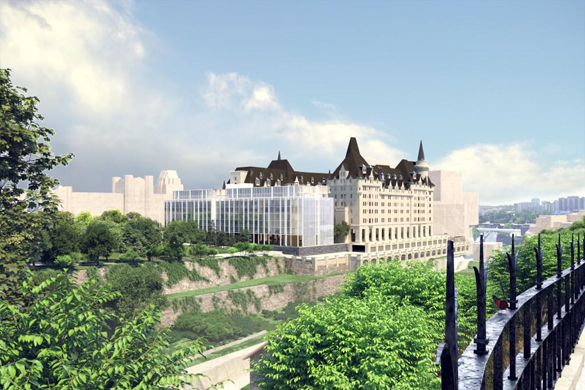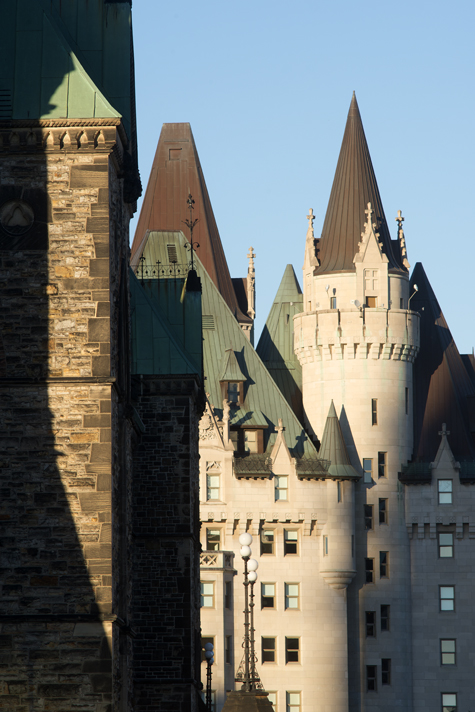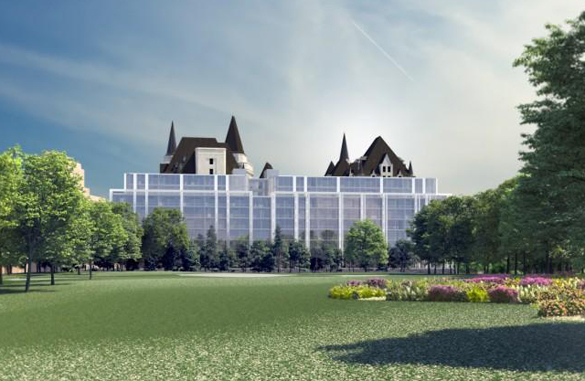Okay, I made it pretty clear in my last blog that I don’t like the new proposal for an addition to the Château Laurier. But my saying I don’t like it is pretty meaningless unless I can explain what I think is wrong with it. I’ll start with this: the addition is utterly incompatible with the Château because it is woefully oblivious to the fundamental aesthetic of the older building, which is a supreme example of what’s known as the Picturesque.
The Picturesque was initially defined in eighteenth-century England by writers such as Batty Langley, Richard Payne Knight and Uvedale Price. Seeking an aesthetic that would provide relief from what they saw as the “abominable mathematical regularity and stiffness” of prevailing Neo-Classical taste, they advocated architecture and landscape gardens that would be playful, varied, intricate and irregular. They thought the built environment should surprise us, excite our curiosity and astonish us.
The Picturesque is at the very heart of the Château Laurier’s design. Its varied silhouette, its dramatic play of light and shade, the way it changes shape as you walk around it; all these make it one of the great Picturesque monuments of Canada. They also make it the ideal companion to the Picturesque ensemble across the canal on Parliament Hill. They are different styles – one’s Gothic Revival the other Châteauesque – but they so clearly breathe the same air.
Added to this is a liberal dash of romance. A certain amount of romance – of excitement and mystery – is inherent in the Picturesque. To that is added the alluring evocation of French heritage in the Château style, and its particular resonance in Canadian history. But the style also embodies a dream of opulence, of luxuriousness, of splendour. That’s why Biltmore, George Vanderbilt’s impossibly extravagant mansion in North Carolina, is Châteauesque. That’s part of the promise of hotels like the Château Laurier: you may not be a Vanderbilt, but for one night at least you can imagine you are, and experience a taste of the Gilded Age.
Let’s isolate some of the key words in the above paragraphs, like “playful”, “varied”, “intricate”, “irregular”, “surprise”, astonish”, “mystery” and “dream”. Now, look at the design for the addition to the Château Laurier. Do those words fit what you see? Or is “abominable mathematical regularity and stiffness” closer to the mark?
It’s not about one style being better than the other, it’s about their being completely incompatible. This is blindingly obvious to plenty of people who’ve never read Uvedale Price and don’t give a toss about eighteenth-century aesthetic theory. The reason so many people have had such a visceral reaction against this project is that they recognize two architectural visions locked in mortal combat.
So, is it possible to make an addition to a historic building that has such a strong character? Well, it’s not easy – why should it be? – but it’s possible. I’ll say more about that in a future blog.
Peter Coffman
peter.coffman@carleton.ca


